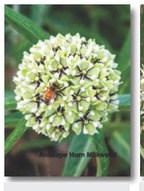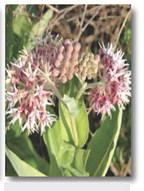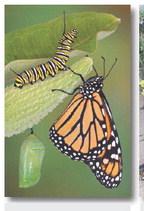Everyone loves butterflies and you can encourage more of them to visit your yard with a little gardening. New Mexico is home to 300 different butterfly species including the beautiful and endangered Monarch butterfly. There are two types of plants butterflies need to survive: The showy plants are the ones producing nectar for the butterfly’s energy – the flowers that make up the butterfly garden. Not less important, but not as showy, is the host plants. These are where butterflies lay their eggs and what the caterpillars eat to progress in their lifecycle to become butterflies.
Let’s start with flowers! Even in mid-summer you can start a butterfly garden. A pot at least 10” across is a good place to begin. Add some good soil and plant flowers that grow quickly like zinnias or cosmos. You can buy Zinnias as seeds or starts for giant flowers down to miniatures. Buy ones that fit your pot size. By fall, you will have a riot of color for the butterflies.
When determining a location for your butterfly garden, sunlight is the key. Most native plants that attract butterflies will require at least six hours of sun a day. If you are using native plants your soil is probably suitable for them, but if you plan to use mostly non-natives, you will want to add compost or buy a rich topsoil.
Butterflies actually drink the nectar from the flowers so you want to have flowers that they can land on and sip the nectar from the center. Think of a flat landing place with food in the middle. Also, plant flowers that bloom throughout the spring, summer, and fall to provide food throughout the seasons. Many butterflies prefer native plants. Some common and easy to grow flowers are: daisy, blanket flower, aster, zinnia, cosmos, Mexican Sunflower, phlox, and of course, dandelion. When you plant your flowers, be sure to clump them by species and color. This makes the colors easier to see and the butterflies will be more likely to come to them. They are attracted to red, orange, yellow, and purple flowers. DO NOT use pesticides or insecticides in your garden! Doing so will kill the butterflies you have worked so hard to attract.
Butterflies need more than plants. They need heat to fly and use the sun to warm themselves. If you see a butterfly just resting with its wings open toward the sun, is soaking up the heat to fly. Provide a few flat rocks for the butterflies to sun in your garden. Also, they need cool, shady spots for resting and to regulate their temperature. If an area is particularly windy, provide a wind break with buildings or larger plants. While not necessary, some butterfly gardens have water features that allow butterflies to obtain hydration and mineral nutrients.
The other kind of butterfly garden is for the caterpillars. The food they eat is called the “Host Plant”. Parsley, dill, and fennel are popular plants for many butterflies but the Monarch caterpillar will only eat milkweed plants. The leaf contains a toxin that protects the caterpillar and the butterfly from predators. There are a number of milkweed plants native to New Mexico and are drought tolerant. Showy Milkweed (Asclepias speciosa), Butterfly Milkweed (A. tuberosa), and Antelope Horn, (A. Asperula) are three of them. They can be found in local nurseries and online.
There is more information on the internet about butterflies, gardens, and protecting the Monarch butterfly. I hoped this perked your interest in these beautiful insects and you will be inspired to convert a space for butterflies in your yard.
Edith Iwan is a Master Gardener who lives and works in Thoreau. As a Master Gardener she assists the County Cooperative Extension Service in providing accurate, research- based gardening information to county residents. If you have any gardening questions, please call the NMSU Cibola County Extension at 505-287-9266 or NMSU McKinley County Extension at 505-863-3432
Antelope Horn Milkweed Flower
Monarch butterfly, caterpillar, & chrysalis.
Typical flat faced flower preferred by butterflies.




